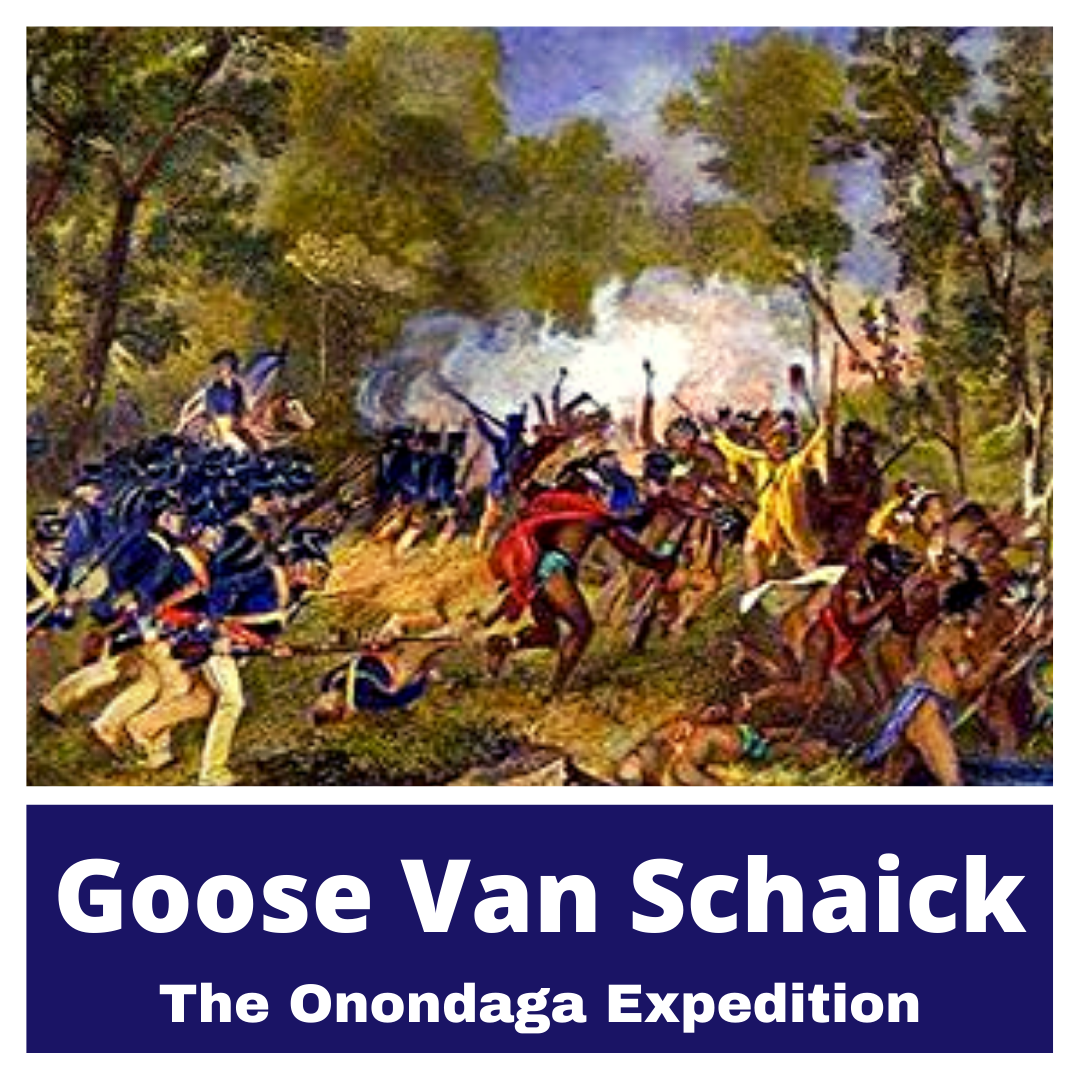Goose Van Schaick Leads The Onondaga Expedition
Goose Van Schaick’s led an expedition against the Native Americans of the Onondaga Nation.
As a resident of Onondaga County this mission holds a special place in my heart. It opened the area to new settlers immediately following the Revolution and they in turn built several houses that still stand in the small town in which I live.
Published 12/11/18 - Updated 10/22/21
Goose Van Schaick
While serving in the French and Indian War, Goose Van Schaick was severely wounded on his face.
Despite the injury, which would haunt him the rest of his life, Goose returned to his home in Albany and assisted in managing his family’s large landholdings. Since his father was Mayor, Goose easily rose through the city’s political ranks.
By 1765, Van Schaick joined a large group of Albany residence who formed a chapter of the Sons of Liberty. This group banded together to sign the Albany Constitution, a document which declared the city’s rights as Englishman (despite having a majority Dutch population).
Colonel
When the violence of the American Revolutionary War broke out, Goose joined the Continental Army as a Colonel. He would remain with the Army for the entirety of the War.
Van Schaick participated in several key battles of the Revolution, notably the Battles of Saratoga and Monmouth. At Saratoga, he was wounded again.
Goose also received election to the Albany Committee of Correspondence, the early wartime Government of the city.
Onondaga Expedition
In the summer of 1779, Goose Van Schaick was given command of Fort Stanwix. He went on an expedition against the Onondaga Native Americans.
As a part of the Iroquois Confederacy, the Onondagas were the closest hostile tribe to colonial settlements. Goose was chosen to push back this foe.
Van Schaick set out with less than six hundred soldiers to attack the largest Onondaga village.
Hearing about Goose’s mission, most of the Native American warriors left before his arrival. He burned the small town and all of its crops while taking more than a dozen prisoners.
Vindication
After claims of rape and abuse by his men during the Onondaga Campaign, the Continental Congress investigated Van Schaick’s conduct.
Congress found that the mission was carried out properly and no crimes had been committed. Schaick and his men were then thanked for ‘their activity and good conduct in the late expedition.’
Goose thereafter took a supporting role in the war, having made is mark as a leader.
Brigadier General
Van Schaick took several leaves during the final years of the war to journey to Philadelphia. He was visiting doctors to have surgery performed to the old wound on his face.
In the last days of the Revolution, when the war was all but won and General Washington was handing out brevet (meaning honorable) promotions, Goose Van Schaick was named as a Brigadier General.
Goose returned to Albany where he lived a quiet life until he passed away from ‘the cancer in his face’ just a few years later. He died on July 4, 1789, the thirteenth anniversary of the Declaration of Independence.
To learn about other Founders who assisted in the development of Upstate New York, browse through my articles on Samuel Kirkland, Nicholas Low, and Simeon De Witt.
Since Goose Van Schaick does not have a biography, I finally have an opportunity to recommend a book on a Native American Nation. ‘Iroquois in the American Revolution’ is a great book that looks at their unfortunate situation when being forced to choose between the British and Americans…a choice which divided their Confederacy. Pick it up through the Amazon affiliate link below.
As always, anyone new here should consider subscribing to my email list for a new Founder every day.







